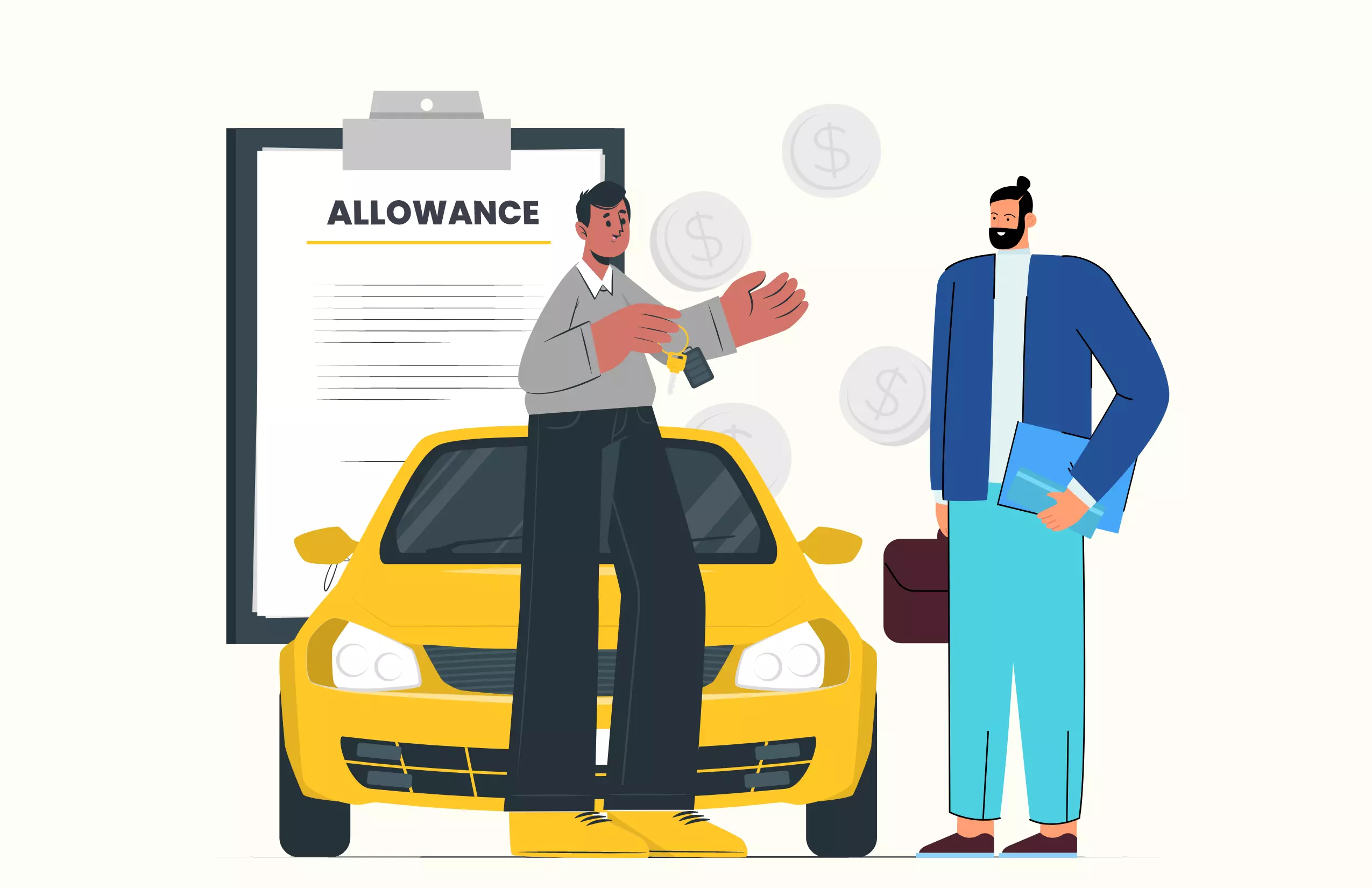
How to Determine Car Allowance for Field Employees?
Table of Contents
Industries of all types require drivers for their fieldwork. Administrators as well as people in sales and customer service positions are among them. These mobile workers must have a vehicle. Particularly, in the case of small businesses, the organization typically lacks vehicles for business purposes.
Instead, your company can provide a car allowance to employees, who work remotely. They get paid back for utilizing their car for work-related travel.
Necessity for Company Car Allowance
Employees who use their cars for work receive reimbursement from their employers through a car allowance. Fuel, wear and tear, and other expenses are included in the costs. The payment you receive is referred to as a “company car allowance.”
The total amount will change depending on your type of business. Think about how the reimbursement is organized and what percentage of travel is necessary. One business might provide a fixed monthly allowance. Another might employ a mileage reimbursement scheme per mile.
Your organization must perform routine reviews of the company car allowance. Make sure that you continue to meet the standards that are necessary in the region and that there is not too much pressure on the employees.
How Do Businesses Calculate a Car Allowance?
Businesses establish a standard mileage rate for using vehicles for business purposes using the same estimation as the IRS.
What Does the Car Allowance Consist of?
- The distance traveled by an employee on business-related trips.
- Operating costs of a vehicle, including gas.
- Costs associated with insurance, taxes, cleaning, repairs, and loss.
- The rate that is obtained after considering these costs is multiplied by the estimated miles to determine the car allowance.
What Should Be Included in a Car Allowance?
An employee who uses their car for work-related purposes may receive a car allowance from their company, which helps to minimize the related costs.
In general, car allowances should be reimbursed for the costs of fuel, insurance, and required repairs, as well as other maintenance and operation of a vehicle. Fair compensation for the “wear and tear” on the employee’s car as a result of business travel should also be included.
What Causes the Taxation of a Car Allowance?
Since the amount of the allowance is not based on the distance that mobile workers travel, car allowances are taxable. The car allowance method fails to meet the IRS’s substantiation criteria in the absence of mileage logs. The IRS considers car allowances to be additional income when employers don’t meet those requirements. Thus, taxes are paid on the allowance by both employers and employees.
Various Methods for Handling a Company Car Allowance
Company car allowance plans can be implemented in several ways. A lot of small business owners provide a fixed monthly payment to cover the cost of their vehicles. It’s crucial to figure out the right monthly payment for any allowance.
You aren’t only paying for gas, for instance, Wear and tear, insurance, and even registration fees must be taken into consideration.
Monthly Fixed Payment
The simple fact is that a monthly car allowance system is the biggest advantage for companies. The employee is not required to keep track of their mileage. As a result, it takes less time for everyone.
Additionally, the employee is not required to fill in expense reports. Your company will find it easy to budget for the allowance amount in this way. However, it might be difficult to ensure that everyone is treated equally under this system. An employee who travels more than others, for example, needs to receive a larger allowance. Likewise, workers who reside in places with more insurance and fuel expenses need to do so.
Mileage Compensation
Instead, you can keep track of every employee’s exact mileage to ensure that everyone is treated fairly. After that, you pay a specific price per mile every month, possibly the IRS standard mileage rate, which is $0.56 in 2021. Reimbursements won’t be too high or low using this strategy.
In the past, keeping track of miles required a lot of physical effort. Employees need to record their daily mileage, including starting and ending. Fortunately, modern technology makes mileage tracking much simpler. GPS mapping through phone apps efficiently and accurately tracks mileage traveled by every field employee.
With this method, Cost control will be more difficult because you cannot predict what the monthly expenses will be. For a small business with limited funds, this might be an issue.
In addition, compared to systems with flat allowances, it requires more labor. Several apps are available to help if you’re trying to go paperless to compensate for this.
FAVR Payment
A Fixed and Variable Rate Allowance (FAVR) plan may be the best choice if you’re willing to work together with a third party to help with management. Although it is complex, it enables employees to receive just compensation that considers both their mileage and the whole cost of staying in their location.
You can offer both a periodic variable payment and a periodic fixed payment with FAVR. The fixed payment is calculated by considering the fixed expenses associated with car ownership, like insurance, registration, and minimization. The variable payment covers running expenses such as tires, fuel, and regular service.
Bottomline
Maintaining reasonable company car allowances is crucial for both your company and your employees. Maintaining a workforce with minimal labor issues is every business goal. Additionally, you should ensure that employees are making informed choices about insurance and other issues.
Employees desire to use their cars for work without having to worry about breaking their financial choices. These objectives are satisfied by a suitable car allowance, particularly if it is regularly reviewed.






